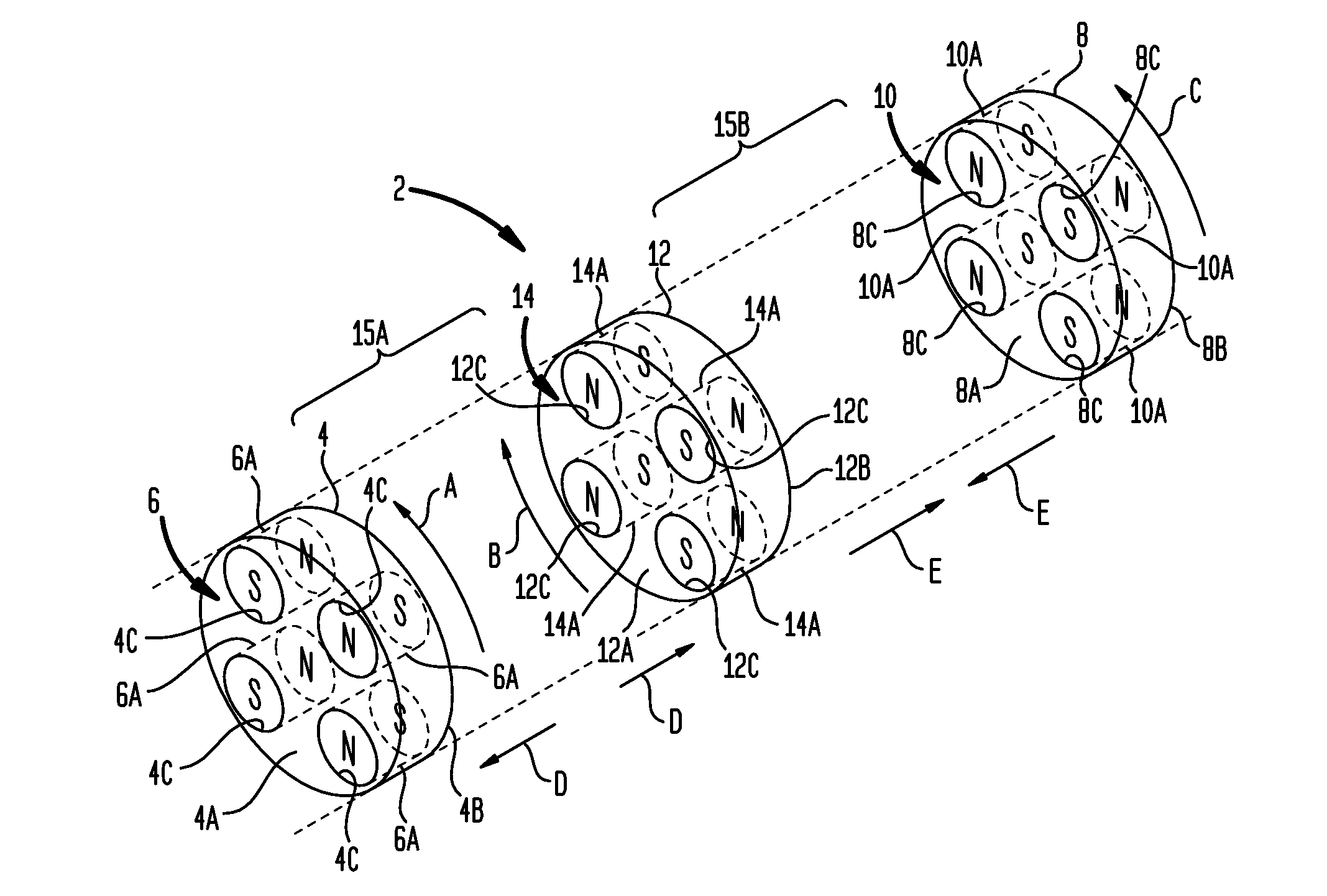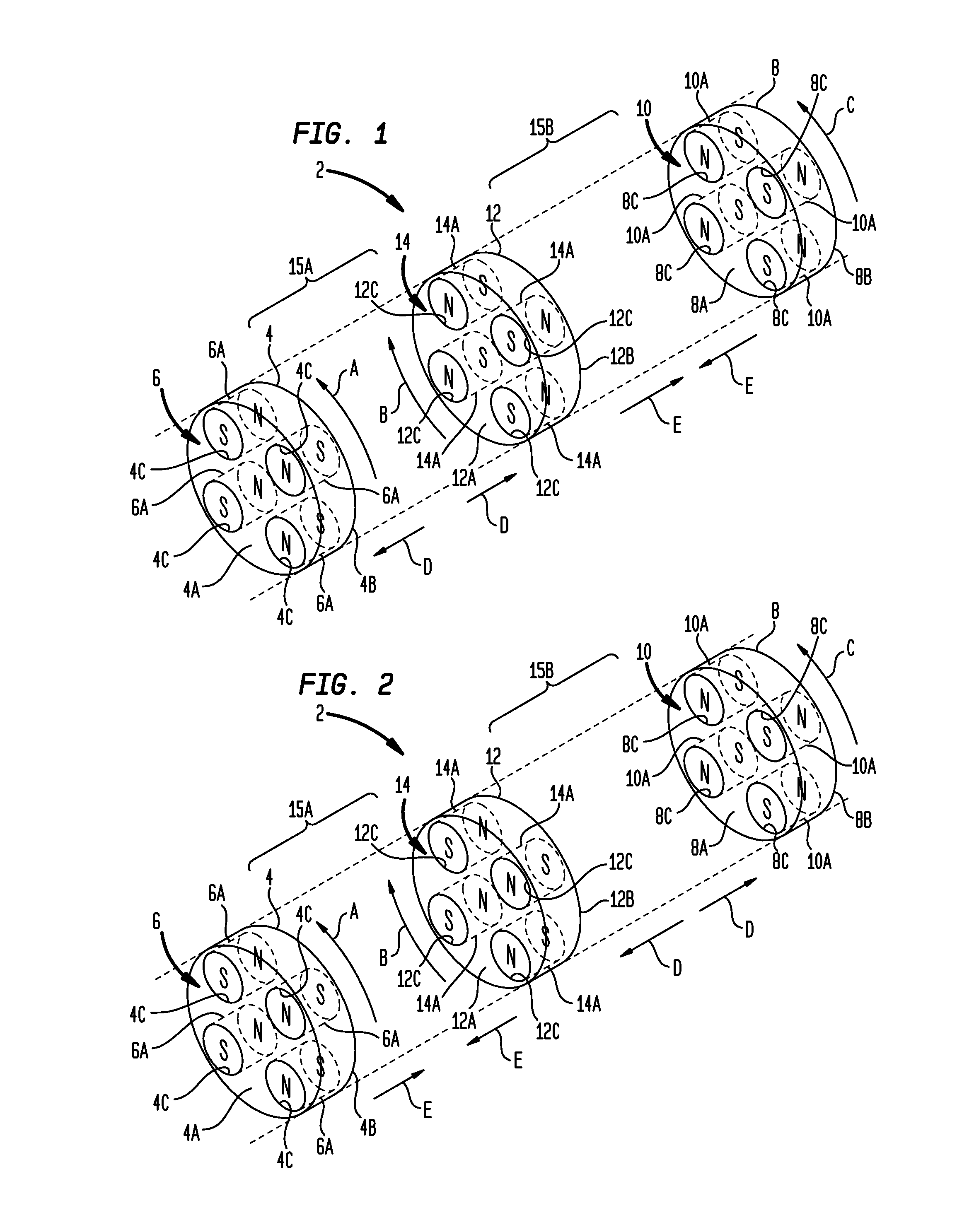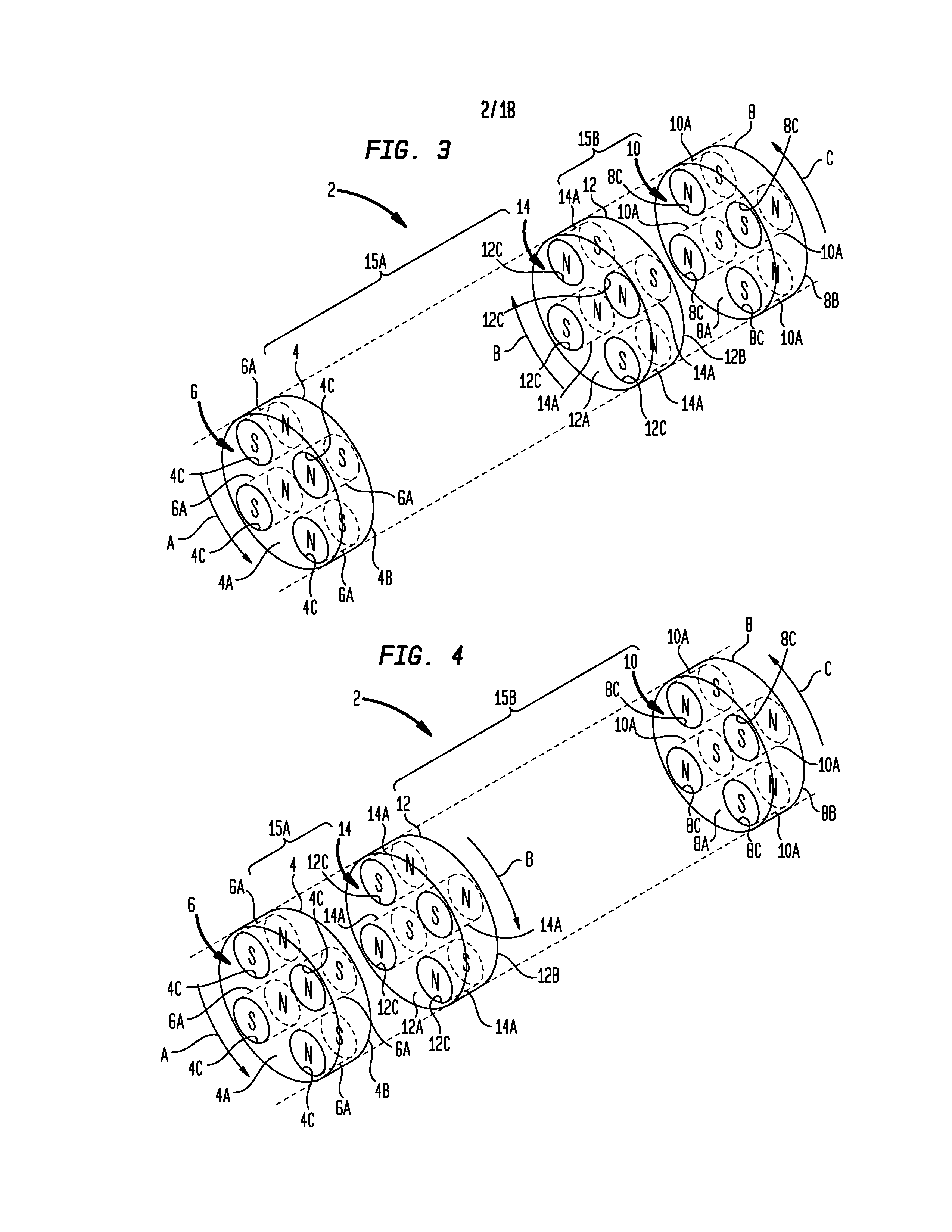Permanent magnet drive apparatus and operational method
a permanent magnet drive and operation method technology, applied in the field of mechanical drives, can solve the problems of unresolved, unproven practical benefits, and no one, it seems, has approached the construction of permanent magnet drives, and achieves the effect of no power stroke forces
- Summary
- Abstract
- Description
- Claims
- Application Information
AI Technical Summary
Benefits of technology
Problems solved by technology
Method used
Image
Examples
Embodiment Construction
[0048]Turning now to the drawing figures, which are not necessarily to scale, like reference numerals will be used to represent like elements in all of the several views. As will be described below in connection with various alternative embodiments, a magnetic drive apparatus as disclosed herein may be used to convert a rotary input received from an input power source to a reciprocating output that may be used to drive a load. The rotary input may be continuous or intermittent, uni-directional or bi-directional. The reciprocating output may comprise a repeating cycle of reciprocal strokes. The magnetic drive apparatus uses permanent magnet arrangements that are each configured in a selected magnet pattern to create magnetic interactions as the magnet arrangements are rotated relative to each other by the input power source. These magnetic interactions deliver reciprocating power in each reciprocal stroke direction (power strokes). Advantageously, the magnetic interactions also produ...
PUM
 Login to View More
Login to View More Abstract
Description
Claims
Application Information
 Login to View More
Login to View More - R&D
- Intellectual Property
- Life Sciences
- Materials
- Tech Scout
- Unparalleled Data Quality
- Higher Quality Content
- 60% Fewer Hallucinations
Browse by: Latest US Patents, China's latest patents, Technical Efficacy Thesaurus, Application Domain, Technology Topic, Popular Technical Reports.
© 2025 PatSnap. All rights reserved.Legal|Privacy policy|Modern Slavery Act Transparency Statement|Sitemap|About US| Contact US: help@patsnap.com



